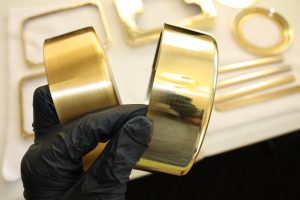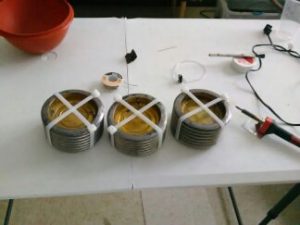Jaeger LeCoultre Atmos Clock Start Instructions

Positioning
Your Atmos will give you the best service if you place it on a firm horizontal support, ie. Mantelpiece, sideboard, etc.
The Atmos Clock should be set up at eye level for the best décor positioning. Also out of the way of dogs tails, children, mishandling, and shaking.
- Opening the cabinet
For Atmos Calibers 528-8, 540, 560:
To open the front glass panel, press downward on the door knob (located at the top of the front glass panel and notched into the top bezel). Then pull gently towards yourself to release the door from the top bezel. You will then be able to remove the glass by lifting out.
For Atmos Calibers 526-5, 522, 532:
These models have a hinged door which opens out towards the front, pull on the small door knob located on bottom left corner.
For Atmos Calibers 519, 528-6:
These models have a lift off cover, which can be very tight fitting. It is important to very carefully remove this cover not to damage the hands.
- Horizontal adjustment
The Atmos must be placed in a completely horizontal position. To ensure that it is absolutely level, the Atmos has it’s own spirit level and stands on three feet: the rear foot is fixed and the other two front ones are adjustable. Once you have placed your Atmos in it’s permanent positioning, you may proceed to level it by adjusting the screws of the two front feet. The air bubble should be in center to achieve correct level. The balance (pendulum) can also be considered a plumb line. Look from the side glass at the frame support above balance wheel, it should be hanging directly centered in middle of hole passing through lower frame support.
- Setting the correct time
To set your Atmos clock, very gently push the minute hand forwards in clockwise direction with your index finger. Pass around all the way until the correct time is displayed. Never move the hands backwards. Never touch the hour hand.
- Starting
Slowly Release the balance wheel (pendulum) by gently moving the clamp lever at the front of the clock. If the balance does not start to move: Check that the clock is standing level. Check that balance locking screw underneath base is retracted (certain models). Gently turn the balance wheel by hand clockwise (left), 3/4 of a turn, then allow it to start moving of its own accord, once the wheel is oscillating normally, close the door.
- Regulating
Your Atmos has been set in the workshop, however timekeeping regulation is quite normal. If after using it you notice that it is running fast or slow, you can adjust it. To do this you will find the regulator at the top of the mechanism. This lever is on a graduated scale. To correct the clock if it is fast: Move lever from right to left. To correct the clock if it is slow: Move lever from left to right in one half increment per day. The key is to take a full 24 cycle to observe the adjustments.
Once the clock is working satisfactorily, do not interfere with it. The Atmos Clock is not designed to be a high accuracy timekeeping device. But rather, the novelty in this invention is the manner in which it powers itself with temperature and barometric pressure changes. You may have noticed the clock doesn’t have a “seconds” hand, nor does it have minute demarcations on the dial.
Here is a link to view the entire “How To” Atmos Clock video instruction series on YouTube. It is a playlist with several videos containing free information and tips for the owners of Jaeger LeCoultre Atmos Clocks to get the most enjoyment out of their fine art. Thank you for watching, please like, share, and subscribe to the channel. It really helps to preserve and maintain the amazing Atmos Clock.
The “Atmos lives on Air.”

 Atmos Clock Bellow Repair
Atmos Clock Bellow Repair 
